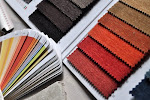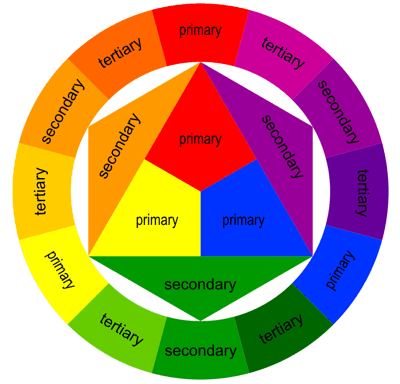COLOR WHEEL
A Color Wheel or color circle is an abstract illustrative organization of color hues around a circle that shows relationships between primary colors, secondary colors, complementary colors, etc. A color circle, based on red, yellow and blue, is traditional in the field of art. It is a visual representation of colors arranged according to their chromatic relationship.In color wheel, Color schemes are logical combinations of colors on the color wheel. In color theory, a color scheme is the choice of colors used in design for a range of media. By selecting the right color scheme, you can create an ambiance of elegance, warmth or tranquility, or you can convey an image of playful youthfulness.
The
first color wheel was invented by Sir Isaac Newton. He split white sunlight
into red, orange, yellow, green, cyan, and blue beams; then he joined the two
ends of the color spectrum together to show the natural progression of colors.
He developed the first circular diagram
of colors in 1666. Since then, scientists and artists have studied and designed
numerous variations of this concept. The color wheel is designed so that
virtually any colors you pick from it will look good together. Over the years,
many variations of the basic design have been made, but the most common version
is a wheel of 12 colors based on the RYB (or artistic) color model. A color
wheel based on RGB (red, green, blue) or RGV (red, green, violet) additive
primaries has cyan, magenta, and yellow secondaries (cyan was previously known
as cyan blue). Alternatively, the same arrangement of colors around a circle
can be described as based on cyan, magenta, and yellow subtractive primaries,
with red, green, and blue (or violet) being secondaries.
Begin
a color wheel by positioning primary hues equidistant from one another, then create
a bridge between primaries using secondary and tertiary colors. Most color
wheels are based on three primary colors, three secondary colors, and the six
intermediates formed by mixing a primary with a secondary, known as tertiary
colors, for a total of 12 main divisions; some add more intermediates, for 24
named colors. Other color wheels, however, are based on the four opponent colors, and may have four or eight main
colors.
Primary colors
are three key colors - Red, Blue and Yellow. They cannot be made from any
other color. Colors
at their basic essence; those colors that cannot be created by mixing others.
In traditional color theory (used in paint and pigments), primary colors are
the 3 pigment colors that can not be mixed or formed by any combination of
other colors. All other colors are derived from these 3 hues.
The
three secondary colors
(green, orange and purple) are created by mixing two primary colors. Each
secondary color is made from the two primary colors closest to it on the color
wheel.
Another
six tertiary colors
are created by mixing primary and secondary colors.
Complementary colors are located opposite each other on a
color wheel.
Analogous colors are located close together on a color wheel.
Md Sohanur Rahman
Junior Instructor (Textile)
Shyamoli Ideal Polytechnic Institute, Dhaka.


